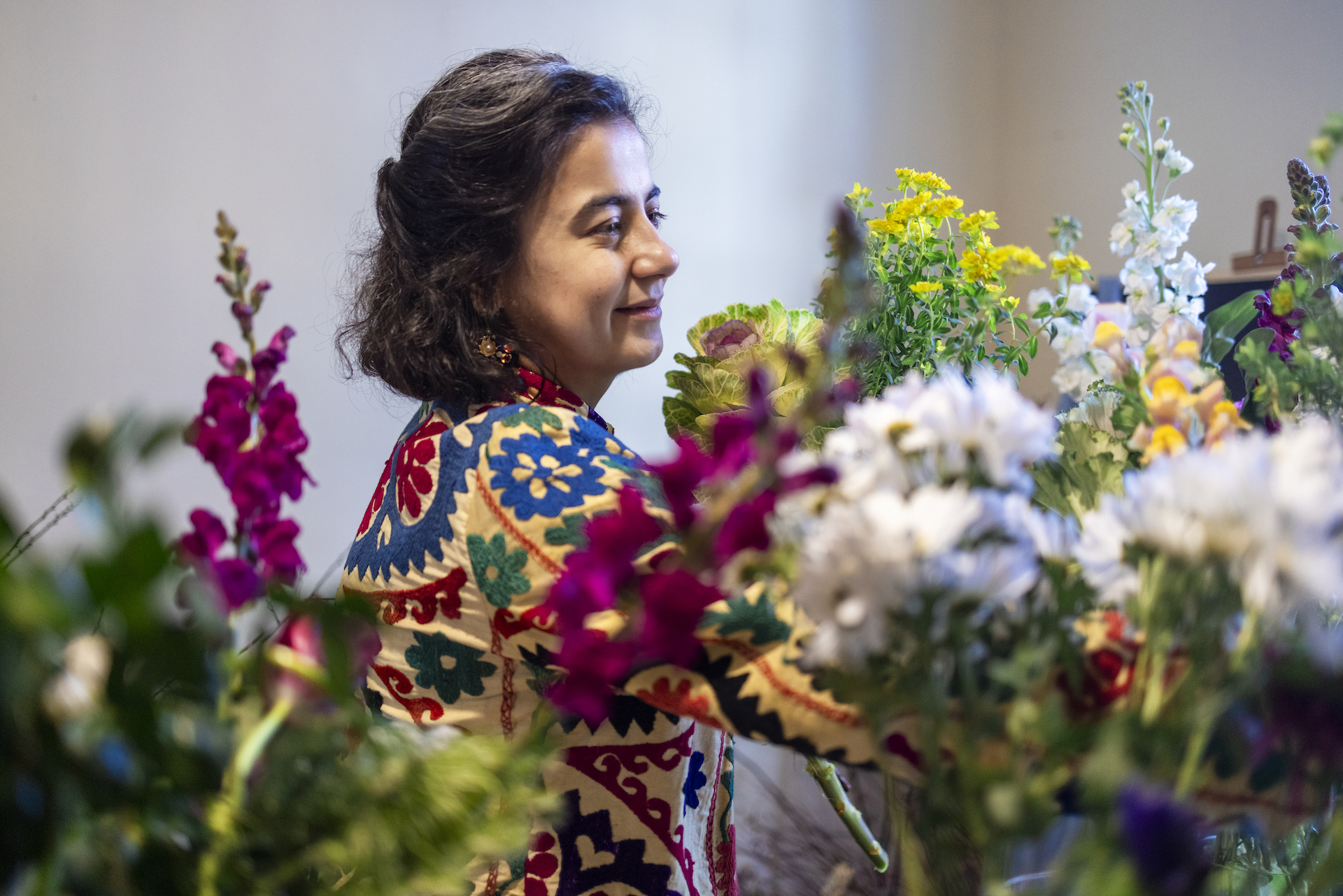Red roses, balloons, and life-sized teddy bears have taken over the streets of Beirut in preparation for lovers’ most anticipated occasions: Valentine’s day.
But for Lebanese farmers and florists focusing on local and seasonal crops, this celebration is not necessarily synonymous with a profitable holiday.
To Josephine Abou Abdo, a florist who specializes in sustainable bouquets, Valentine’s is not a profitable instance.
“I actually sell less on Valentine’s,” she explains from her atelier in the heart of Beirut, “because I don’t promote it and don’t sell roses.”
While mainstream culture positions the red rose as the perfect gift for the occasion, experts in horticulture warn against the ecological – and in Lebanon’s case economical – impact of choosing this flower over locally grown ones.
From her greenhouse in Sin El Fil, Rania Younes – founder of Fleurs du Liban – oversees the flower deliveries that go out everyday. In anticipation for Valentine’s, shelves are overflowing with red flowers, but none of them are roses.
“Roses are not winter crops; winter crops are tulips, anemones, and buttercups,” she says. “Countries that produce roses at this season are high tropics countries like Kenya and Ethiopia.
“It’s Lebanese money that is going outside instead of staying in Lebanon,” Younes says.
The transportation of roses from the country of origin to the destination is costly both in carbon footprint and finance. But to understand this veneration of red roses, we have to understand the origin of Valentine’s.
Red roses for Valentine’s Day: Where did it come from?
The celebration of love we have come to know today does not have an origin story. What first started as a pagan celebration of fertility on February 15, evolved into a Christian holiday by the end of the fifth century, to celebrate a martyred Saint Valentine, according to an in-depth story by National Geographic (Nat Geo).
According to Nat Geo, the first romantic connotation of February 14, saw the light during the 14th century thanks to Geoffrey Chaucer, an English poet, who linked the holiday to European bird’s mating season.
The capitalization of Valentine’s day came much later, thanks to Chocolate giants, Richard Cadbury and Milton Hershey, according to the Smithsonian Magazine.
In 1861 then 1894 respectively, they incorporated elements of love in the sale of their chocolates, such as heart shaped boxes and the infamous Hershey’s Kiss.
As for the symbolism of red roses, its origins remains largely a mystery.
“The rose is by excellence the flower,” says Younes, “and red is the color of love. So if you want to offer flowers to someone for Valentine’s, it’s the obvious solution.”
Similar to the origin of Valentine’s day, the meaning of roses relies solely on myths and interpretations, according to Bloom College, an online floristry school. Aphrodite’s beauty made roses spring at her feet, the Middle Ages used red roses as a symbol of passion specially for the Virgin Mary and the Christ, and finally during the Victorian era, the book “Victorian Language of Flowers” sealed the meaning of red roses.
At “Hamra Flowers”, Ali Najem pre-packs some bouquets of roses and tulips.
“They’re the flowers that sell the most at this time,” he says. “On the 14th of February, it became a tradition to offer red roses, and people just went with it.”
How florists incur losses on Valentine’s Day
Although they’re the most popular at this time, Najem insists that the profit margin is minimal, especially in these tough financial times.
“Nowadays I start by asking what the customer’s budget is, to direct them and not lose their time and mine,” he says.
Abou Abdo echoes this idea that red roses took over Valentine’s, without much questioning, in this day and age. “We’re blinded by consumerism and commercialism,” she says.
“We’re blinded by it so much that doing something else feels weird. It’s very westernized because roses are not native to Lebanon.”
Flower shops and Instagram feeds are flooded with offers for red rose bouquets and packages, ranging from 10 dollars for a single rose, up to a thousand dollars for a bouquet of more than two hundred roses.
Younes emphasizes that people choose to express their love in whichever way they want. “But it’s an effort the florist should make. They should be the one to educate customers, explain, and propose options,” she adds.
“I’m proud of Lebanese florists, they have beautiful bouquets and places. I would like for florists to be proud of Lebanese farmers and recognize the value of what we’re doing.”
For Younes, Valentine’s day can be a win-win situation for the clients, the florists, the famers, and the economy.
“People should become aware that if they want to show an act of love, they can share an act of love for their country by buying local flowers, for the country in which their partner is, and not compartmentalize the love.”


